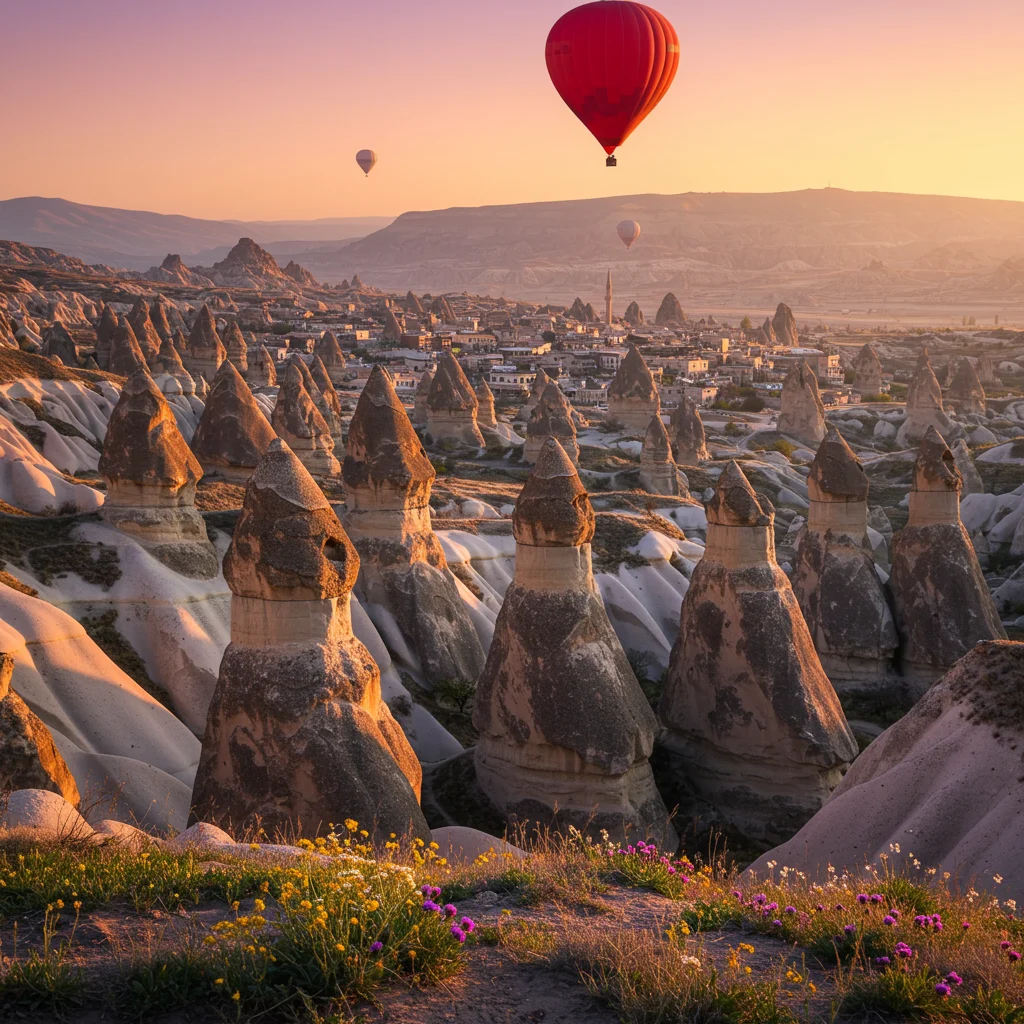What Is the Red Tour in Cappadocia?
The Red Tour in Cappadocia is a curated, full-day sightseeing route that introduces visitors to the region’s most celebrated valleys, ancient villages, and geological marvels. This tour is designed for travelers who wish to experience the iconic highlights of Cappadocia’s northern section, blending history, culture, and unforgettable landscapes into a single, convenient itinerary.
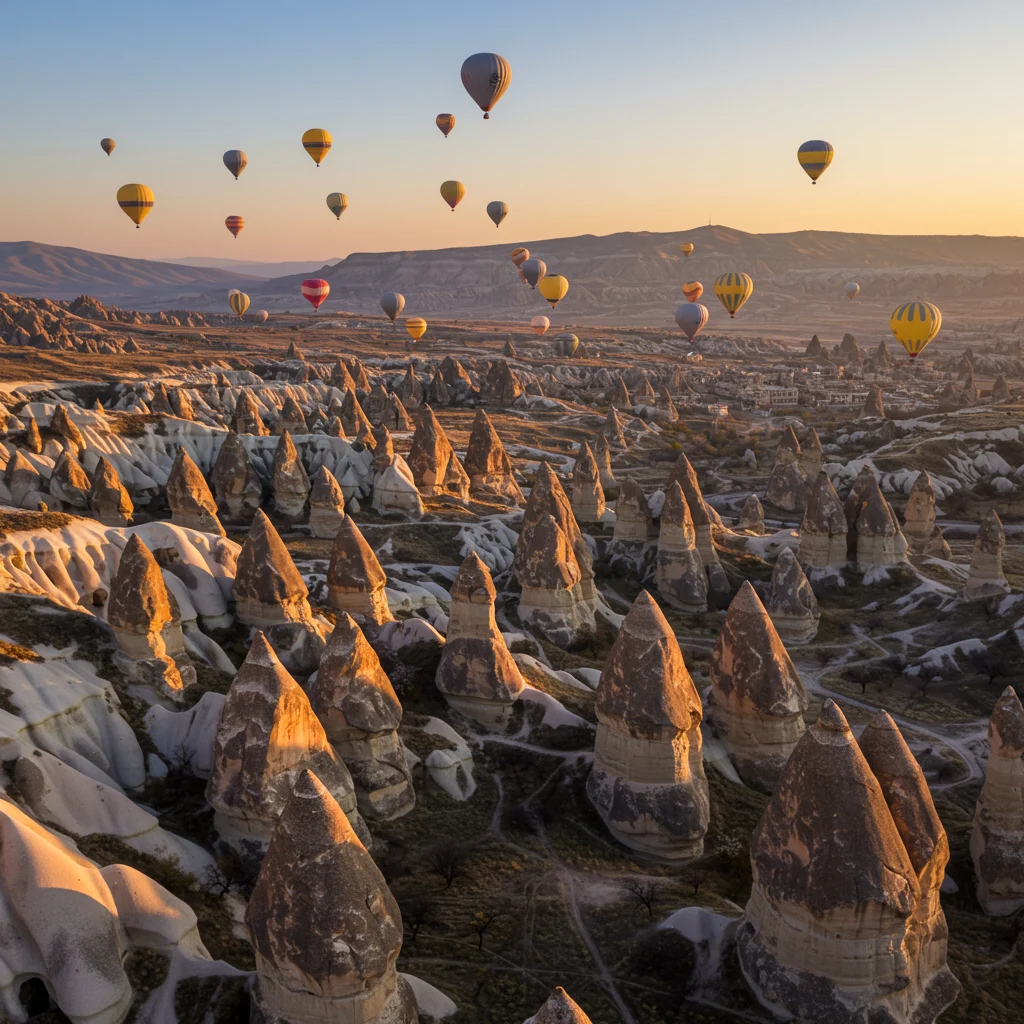
Participants enjoy guided visits to open-air museums, panoramic viewpoints, and traditional villages, all while learning about the region’s volcanic origins and unique cave architecture. The Red Tour is renowned for its efficiency and depth, making it a popular choice for first-time visitors and those with limited time.
Why Choose the Red Tour Over Other Tours?
Selecting the Red Tour offers several distinct advantages compared to other regional excursions. This route showcases a concentration of Cappadocia’s most photogenic valleys and historical landmarks, all within a manageable distance, ensuring minimal time on the road and maximum time at each destination.
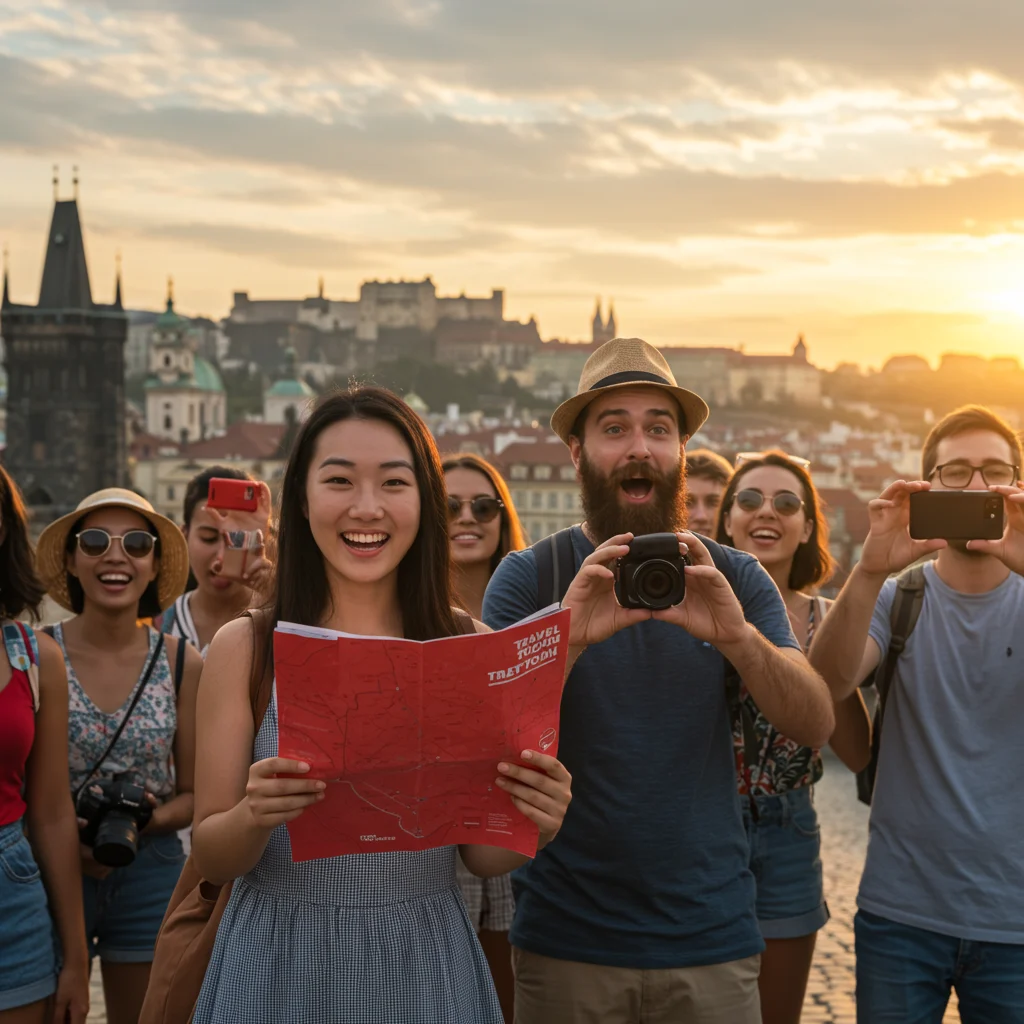
The Red Tour’s itinerary is carefully crafted to balance natural wonders, like the famed fairy chimneys, with cultural experiences such as pottery workshops and ancient churches. For those who appreciate a blend of history and scenery, the Red Tour’s pace and accessibility provide an ideal introduction to Cappadocia’s essence.
History and Origins of the Red Tour Route
The origins of the Red Tour route trace back to the growing popularity of Cappadocia as a global travel destination in the late 20th century. Local guides and tourism agencies developed this itinerary to showcase the region’s most accessible and visually arresting sites, all within a single day’s journey.
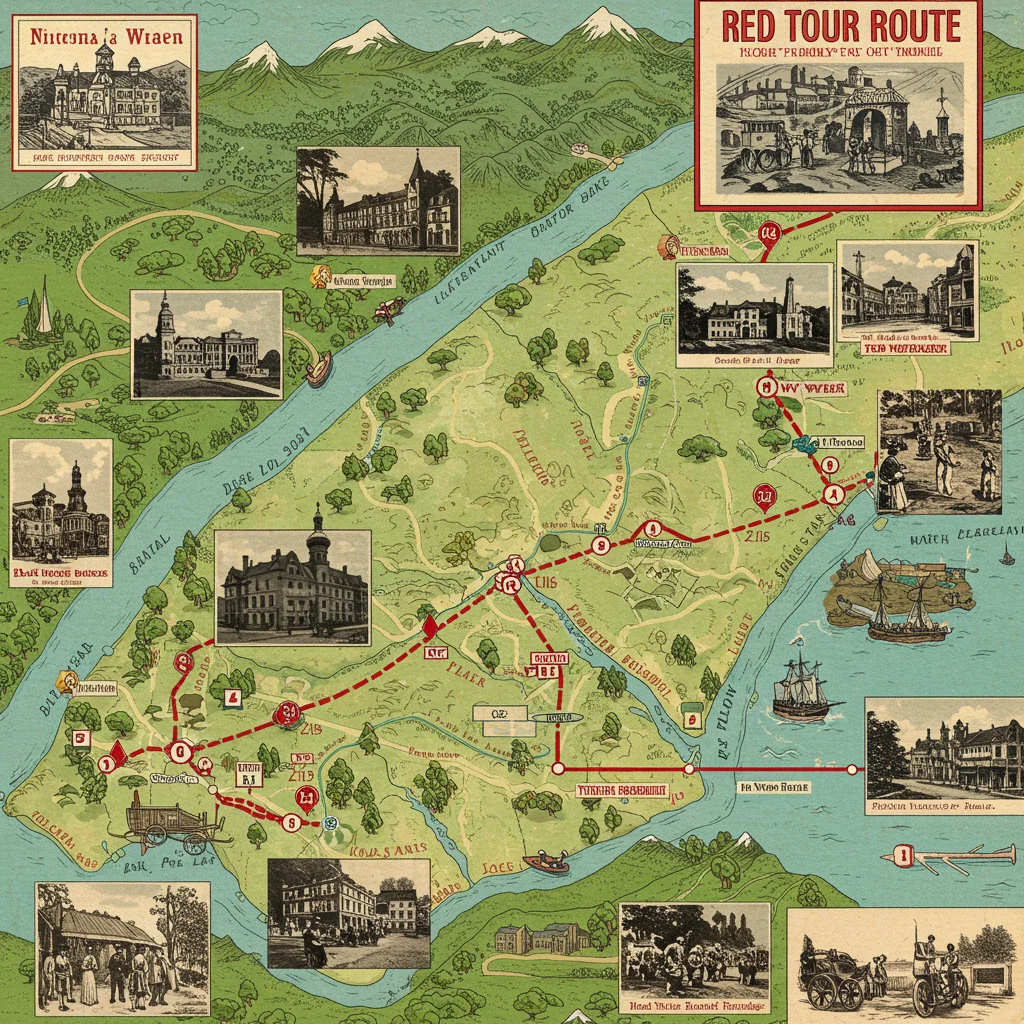
By focusing on the northern valleys and settlements, the Red Tour preserves a sense of continuity, linking the area’s geological evolution with the stories of the people who have lived among its caves and volcanic formations for millennia.
Where Does the Red Tour Go?
The Red Tour covers a variety of stops, each offering a unique perspective on Cappadocia’s volcanic landscape and cultural heritage. Travelers typically visit the Göreme Open Air Museum, Uçhisar Castle, Love Valley, Red Valley, Çavuşin Village, Pasabag (Monks Valley), Devrent Valley, and the artisan town of Avanos.

Each location provides a distinct blend of natural beauty, historic significance, and opportunities for memorable experiences—whether admiring sweeping vistas or observing centuries-old frescoes inside rock-hewn chapels.
How to Book the Red Tour in Cappadocia
Booking the Red Tour is straightforward, with numerous local agencies and online platforms offering daily departures. We recommend comparing itineraries and inclusions, as some tours may provide added experiences such as lunch or pottery demonstrations in Avanos.
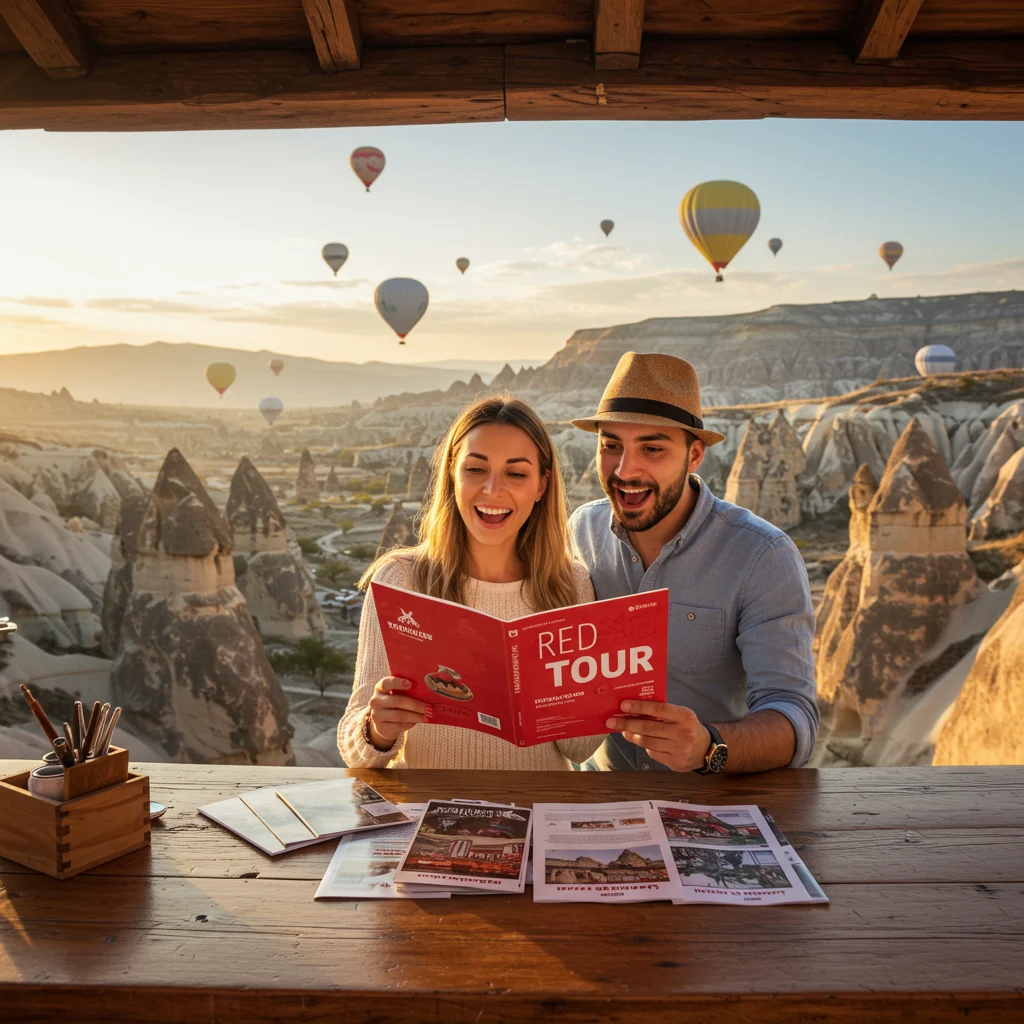
Many travelers find it convenient to book activities in advance through trusted platforms like Viator, which ensures transparency and secure payment options.
What to Expect on the Red Tour: An Overview
When joining the Red Tour, expect an early start and a full day immersed in Cappadocia’s most recognizable landscapes. Guides provide in-depth commentary on the region’s geological history, the significance of ancient cave dwellings, and the artistry behind local crafts.

Most Red Tours include comfortable transportation, entrance fees to major attractions, and a lunch break at a local restaurant. The pace is active but accessible, with frequent stops for photographs, short hikes, and cultural demonstrations.
Essential Tips for First-Time Red Tour Travelers
For those new to Cappadocia, a few practical tips can enhance your Red Tour experience:

- Wear sturdy walking shoes, as paths can be rocky and uneven.
- Dress in layers—mornings can be cool, but afternoons often warm up.
- Bring a refillable water bottle and sunscreen, especially during summer months.
- Have cash on hand for small purchases or tips.
If you’re interested in other breathtaking natural excursions, you might enjoy reading about our full-day tour exploring the waters of Tolantongo for a different kind of adventure.
Best Time of Year to Experience the Red Tour
The ideal time for the Red Tour is during spring (April–June) and autumn (September–October), when the weather is mild and the valleys are painted with vibrant wildflowers or autumn hues. These months also offer fewer crowds and clearer skies for photography.
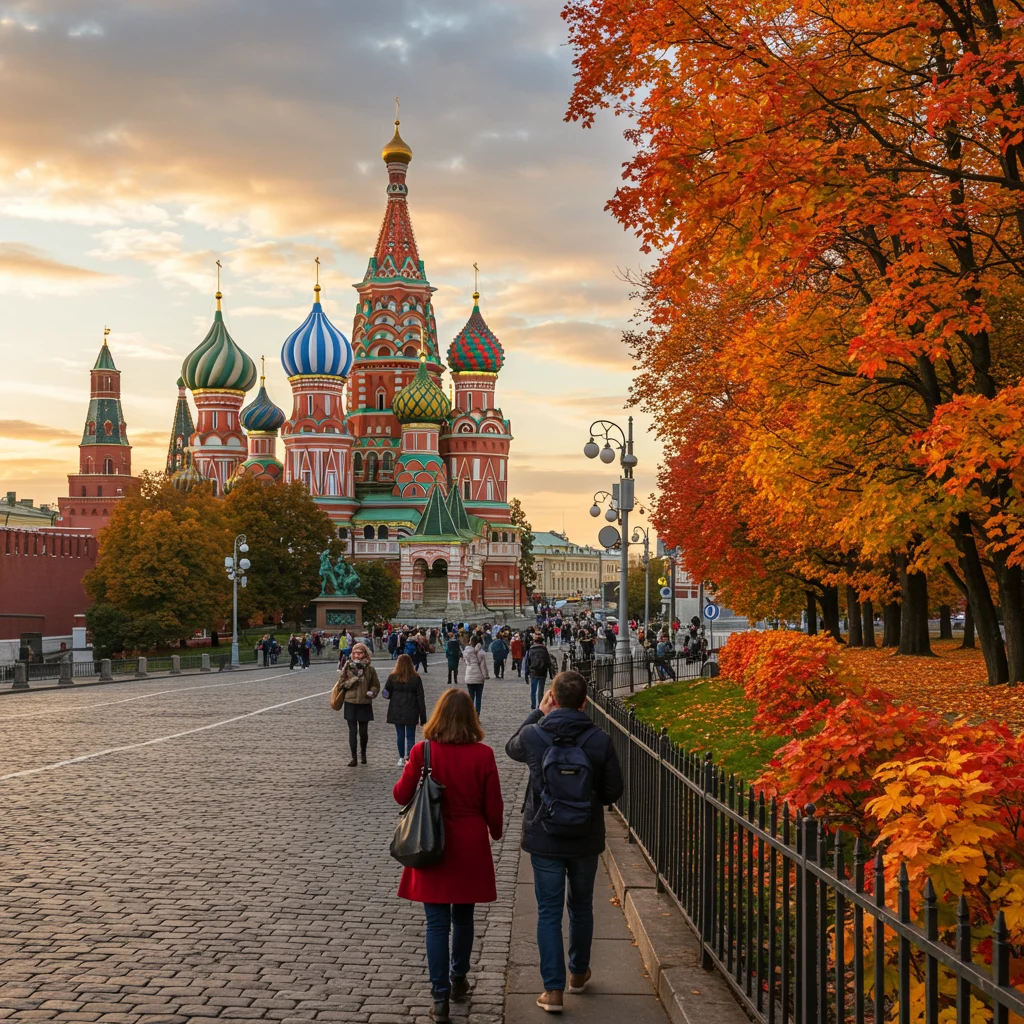
Summer brings warmer temperatures and increased visitor numbers, while winter can be chilly but offers a magical, snow-dusted landscape for those seeking a quieter ambiance.
What Should You Pack for the Red Tour?
Packing wisely can make a significant difference in your comfort and enjoyment. We recommend the following essentials:

- Comfortable shoes for walking and light hiking
- Weather-appropriate clothing (layers are best)
- Sunscreen, sunglasses, and a hat
- A camera or smartphone for photos
- Reusable water bottle and snacks
- Portable charger for electronic devices
A lightweight daypack is also helpful for keeping your belongings organized throughout the day.
Red Tour Itinerary: Key Stops and Highlights
The Red Tour itinerary features a thoughtfully arranged sequence of sites that showcase Cappadocia’s geological wonders and cultural treasures. Each stop offers a distinctive experience, from panoramic viewpoints to hands-on workshops.
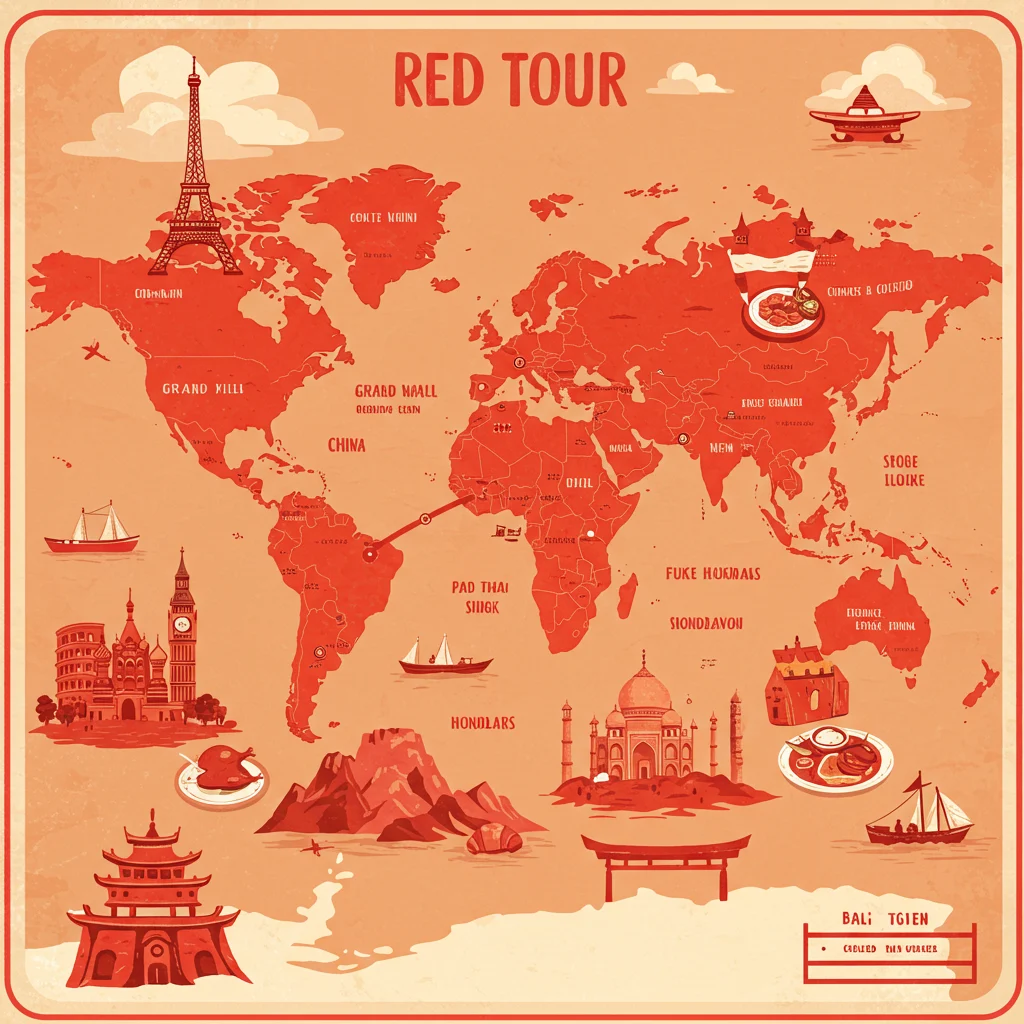
Göreme Open Air Museum: The Heart of Cappadocia
The Göreme Open Air Museum stands as a testament to Cappadocia’s rich religious history and remarkable cave architecture. This UNESCO World Heritage site draws visitors from around the world to marvel at its rock-cut churches and Byzantine frescoes.
What Makes the Göreme Open Air Museum Unique?
Unlike any other site in the region, the museum houses a dense concentration of monastic dwellings and chapels carved directly into the soft volcanic rock. The intricate wall paintings, dating back to the 10th and 11th centuries, reveal the artistic and spiritual life of early Christian communities.
Top Sights Within the Museum Complex
Be sure to visit the Dark Church (Karanlık Kilise), renowned for its vivid frescoes, and the Buckle Church (Tokalı Kilise), the largest and most complex structure in the museum. Each chapel offers a glimpse into the religious devotion and craftsmanship of Cappadocia’s early inhabitants.
Photography Tips for Göreme Open Air Museum
Lighting can be challenging inside the cave churches, so we suggest using a camera with good low-light performance or adjusting your smartphone settings accordingly. Early morning or late afternoon visits provide the best natural light for exterior shots, with fewer visitors in the frame.
Uçhisar Castle: Panoramic Views and Ancient Fortresses
Towering above the region, Uçhisar Castle offers sweeping views across the valleys and volcanic peaks of Cappadocia. This natural rock fortress served as a strategic lookout and shelter for centuries.
History of Uçhisar Castle
The castle’s origins date back to the Byzantine era, when it provided refuge from invading forces. Over time, its tunnels and chambers expanded, accommodating entire communities during periods of conflict.
Best Spots for Sunset at Uçhisar
The castle’s summit remains one of Cappadocia’s most popular sunset locations. Arrive early to secure a vantage point, and watch as the sun bathes the valleys in soft, golden light—a truly unforgettable sight.
Love Valley: Nature’s Sculpted Masterpiece
With its dramatic, pillar-like formations, Love Valley is a favorite among photographers and hikers alike. The valley’s whimsical landscape inspires both awe and curiosity.
How Did Love Valley Get Its Name?
The valley’s name comes from the distinctive shapes of its rock formations, which resemble natural sculptures. Over centuries, wind and water erosion have created these towering pillars, lending the area a sense of playful artistry.
Hiking Trails in Love Valley
Several well-marked trails wind through Love Valley, ranging from short scenic walks to longer routes connecting neighboring villages. Along the way, wildflowers and fragrant herbs fill the air, and the soft crunch of volcanic tuff underfoot adds to the sensory experience.
Red Valley: The Colors of Cappadocia
The Red Valley is famous for its vibrant hues, which shift from soft pinks to deep reds as the sun moves across the sky. This area is particularly striking at sunrise and sunset.
Best Times to Visit Red Valley
For the most intense colors, plan your visit during the golden hours—just after sunrise or before sunset. The interplay of light and shadow accentuates the valley’s layered geology and creates a breathtaking spectacle.
What Geological Features Define Red Valley?
Red Valley’s landscape is shaped by layers of volcanic ash and lava, eroded over millennia into smooth waves and jagged spires. The mineral content of the rock gives the valley its signature coloration, making it a favorite for geologists and nature lovers alike.
Çavuşin Village: Ancient Dwellings and Churches
Nestled among the hills, Çavuşin Village is known for its historic cave houses and early Christian churches. Wandering its narrow lanes offers a glimpse into Cappadocia’s rural traditions.
Exploring the Cave Houses of Çavuşin
Many of the village’s homes and storage rooms are carved directly into the cliffs, providing natural insulation and unique architectural charm. Some caves remain inhabited, while others serve as workshops or storerooms.
Famous Churches in Çavuşin
The Church of St. John the Baptist is among the oldest and largest cave churches in the region, known for its vast nave and faded frescoes. It stands as a testament to the religious devotion of Cappadocia’s early settlers.
Pasabag (Monks Valley): Home of the Fairy Chimneys
Pasabag, also known as Monks Valley, is the best place to see the region’s iconic fairy chimneys—towering, mushroom-shaped rock formations that seem almost otherworldly.
What Are Fairy Chimneys?
Fairy chimneys are tall columns of volcanic tuff capped by harder basalt rock. Over thousands of years, erosion sculpted these surreal shapes, which have inspired countless myths and legends.
The Legend of Monks Valley
Local stories suggest that hermit monks once inhabited these chimneys, carving out small cells and chapels within their protective walls. Today, visitors can peek inside several of these ancient dwellings, imagining the solitude and devotion that defined monastic life.
Devrent Valley: Imagination Valley’s Surreal Landscapes
Devrent Valley, often called Imagination Valley, is celebrated for its whimsical rock formations that resemble animals, people, and fantastical shapes.
Unique Rock Formations in Devrent Valley
With a little imagination, visitors can spot natural sculptures resembling camels, seals, and even a mother and child. The valley’s landscape encourages creativity and playfulness, making it popular with families and photographers.
Can You Spot the Camel Rock?
One of Devrent Valley’s most famous features is the Camel Rock, a striking formation that unmistakably resembles a resting camel. It’s a favorite photo stop and a symbol of Cappadocia’s endless capacity to surprise.
Avanos: Pottery, Art, and the Red River
Located along the banks of the Kızılırmak (Red River), Avanos is renowned for its pottery workshops and vibrant artisan culture. The town’s riverside setting adds a tranquil contrast to the stark beauty of the valleys.
The Pottery Tradition of Avanos
Pottery-making in Avanos dates to the Hittite era, with techniques passed down through generations. Many workshops welcome visitors to try their hand at the potter’s wheel, shaping the region’s signature red clay.
What to See Along the Kızılırmak (Red River)?
A riverside stroll reveals traditional stone houses, local cafes, and the gentle sound of water flowing over smooth pebbles. The river’s reddish hue, especially vivid after rainfall, adds a unique visual accent to the town’s charm.
Volcanoes of Cappadocia: Shaping the Landscape
Cappadocia’s valleys and rock formations owe their existence to powerful volcanic activity millions of years ago. Understanding the region’s volcanic history enriches every step along the Red Tour.
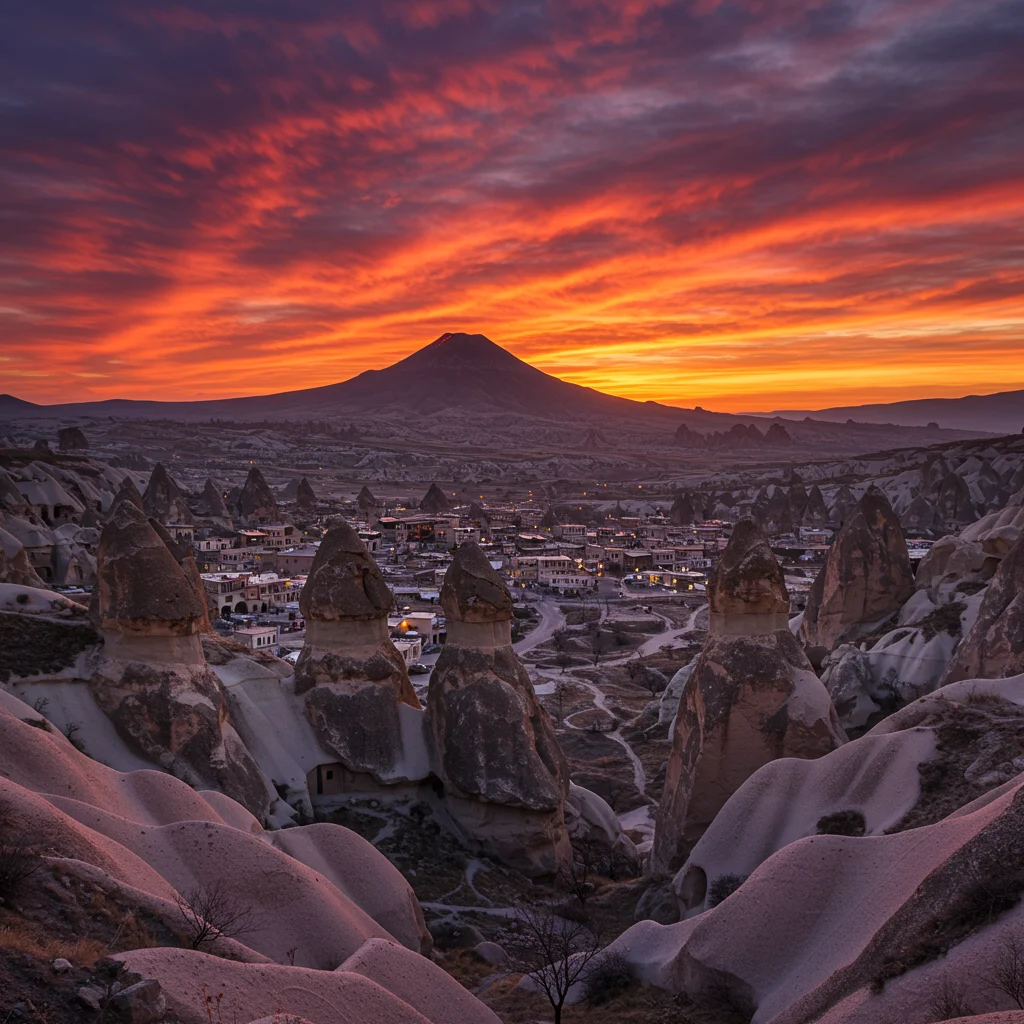
How Did Ancient Volcanoes Create Cappadocia’s Valleys?
Volcanic eruptions from Mount Erciyes, Mount Hasan, and other ancient peaks blanketed the area with thick layers of ash and lava. Over time, wind and water sculpted this soft rock into the sweeping valleys and whimsical shapes we see today.
Travelers interested in volcanic landscapes might also appreciate our coverage of the Golden Circle and Kerid Volcanic Crater in Iceland.
Mount Erciyes: The Sleeping Giant
Rising over 3,900 meters, Mount Erciyes dominates the skyline south of Cappadocia. Though dormant, it remains a powerful symbol of the region’s geological past and a popular destination for winter sports enthusiasts.
Mount Hasan: Geological Significance
Mount Hasan contributed vast quantities of volcanic material that shaped the valleys and plateaus of Cappadocia. Today, its snow-capped peak stands as a silent witness to the forces that forged the landscape.
The Role of Volcanic Eruptions in Cave Formation
The soft volcanic tuff deposited by ancient eruptions made it possible for people to carve out homes, churches, and entire villages within the rock. This unique combination of natural processes and human ingenuity defines Cappadocia’s enduring appeal.
The Valleys of Cappadocia: A Complete Guide
Cappadocia’s valleys are the soul of the Red Tour, each offering distinctive colors, shapes, and opportunities for exploration. From the towering fairy chimneys of Pasabag to the dreamy ridges of Red Valley, these landscapes invite curiosity and wonder.
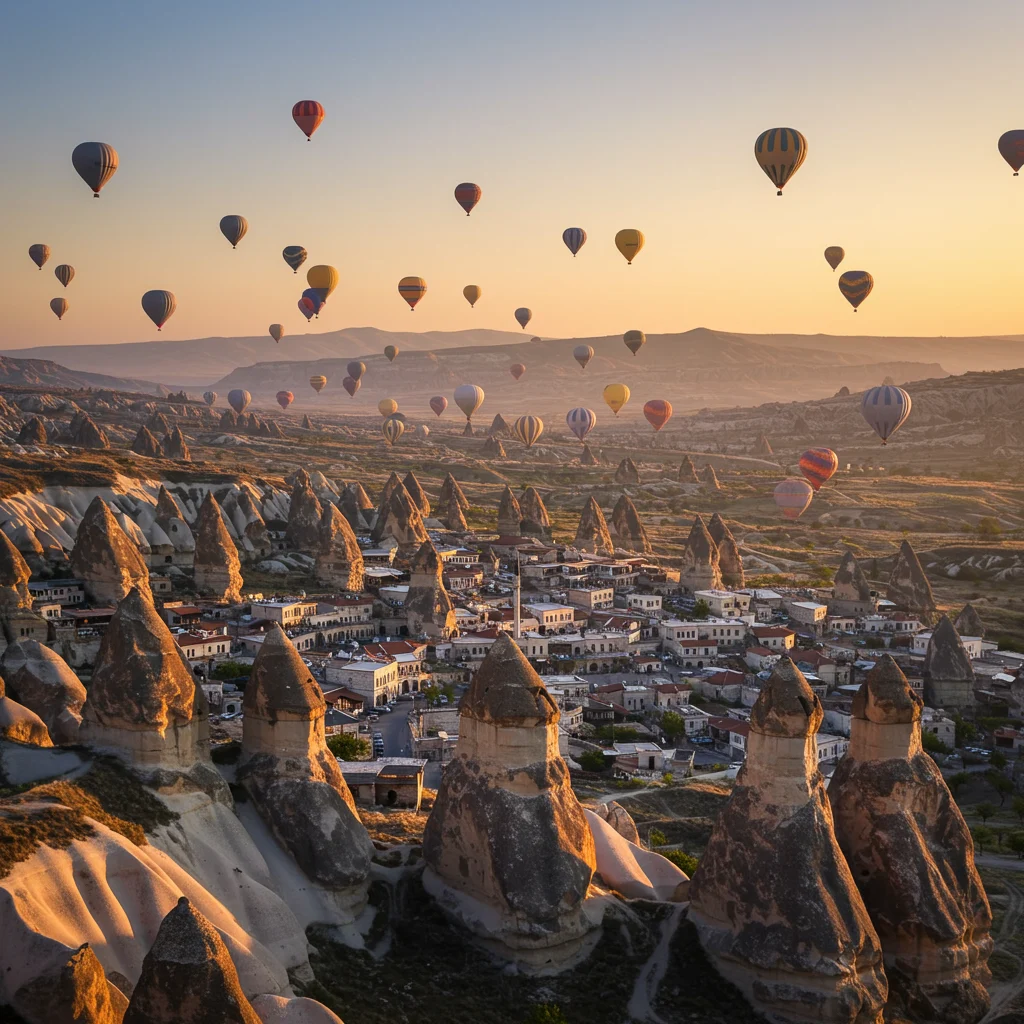
Which Valleys Are Included in the Red Tour?
The Red Tour features Love Valley, Red Valley, Devrent Valley, and Pasabag as its principal natural highlights. Each valley offers unique geological formations, hiking trails, and panoramic viewpoints.
How to Explore the Valleys: Walking, Biking, or Guided Tours?
While the Red Tour provides guided transportation between sites, many travelers choose to return for deeper exploration on foot or by bike. Well-marked trails and local rental shops make independent adventures accessible to all fitness levels.
As experts often say:
“Traveling is not just about seeing new places, but about seeing with new eyes.”
Wildlife and Flora in Cappadocia’s Valleys
The valleys are alive with seasonal wildflowers, aromatic herbs, and resilient shrubs. Birdwatchers may spot hoopoes, bee-eaters, and even the occasional eagle soaring above the ridges, while rabbits and foxes dart among the rocks.
Cultural and Historical Insights Along the Red Tour
Beyond its natural beauty, the Red Tour offers a window into Cappadocia’s layered history and enduring traditions. Every stop reveals stories of faith, resilience, and creativity.
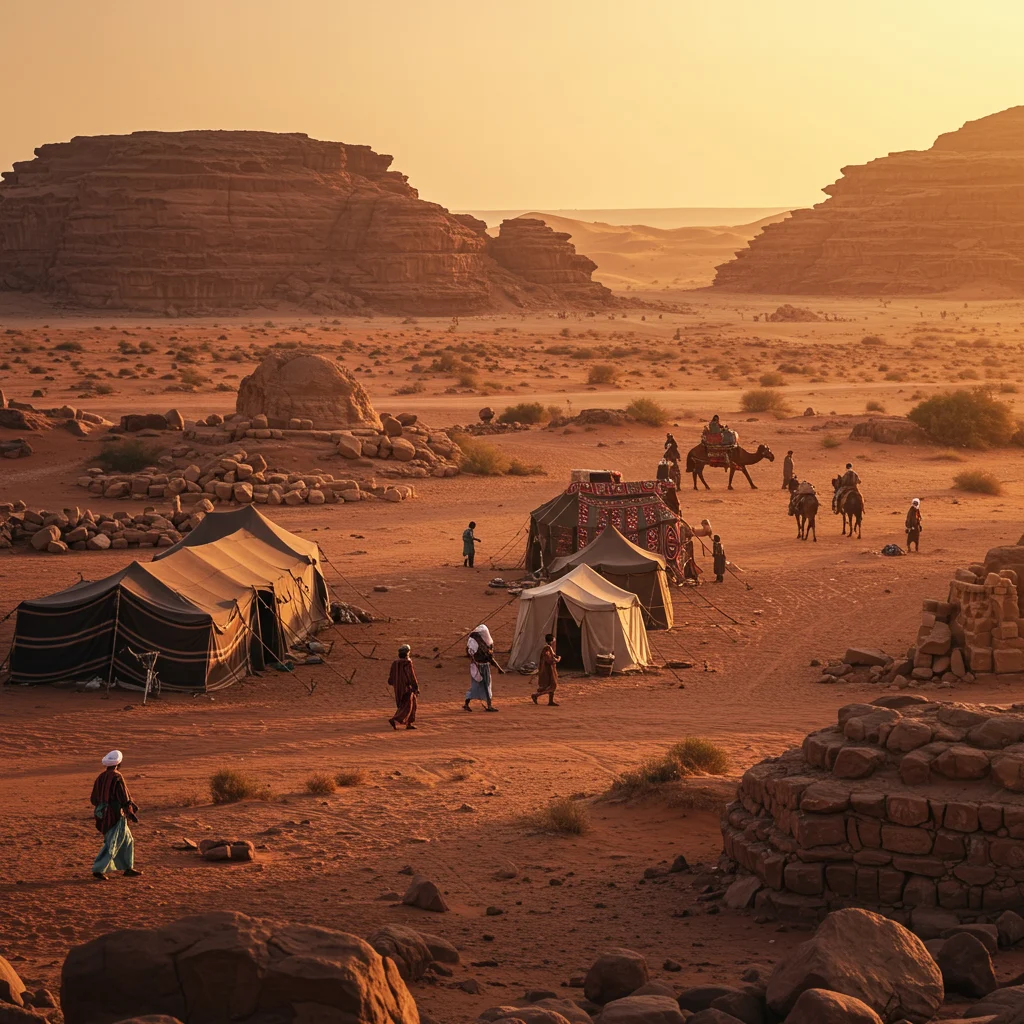
Early Christian Heritage in Cappadocia
Cappadocia was a sanctuary for early Christians fleeing persecution. They built hidden churches and monasteries, leaving behind an extraordinary legacy of rock-cut architecture and sacred art.
Cave Churches and Frescoes: What to Look For
Inside the cave churches, look for frescoes depicting biblical scenes, saints, and intricate geometric patterns. Many paintings retain their original colors, offering a direct connection to the region’s spiritual past.
Daily Life in Cappadocia’s Villages
Village life follows the rhythms of agriculture and artisan crafts. Locals tend vineyards, weave carpets, and shape pottery, preserving skills passed down through generations.
Local Legends and Folktales of the Valleys
Cappadocia’s valleys are woven with legends—stories of lost cities, hidden treasures, and miraculous escapes. Guides often share these tales, adding layers of intrigue to the already enchanting scenery.
Experiencing Cappadocia Beyond the Red Tour
While the Red Tour covers many highlights, Cappadocia offers even more for those who wish to continue their journey of discovery.
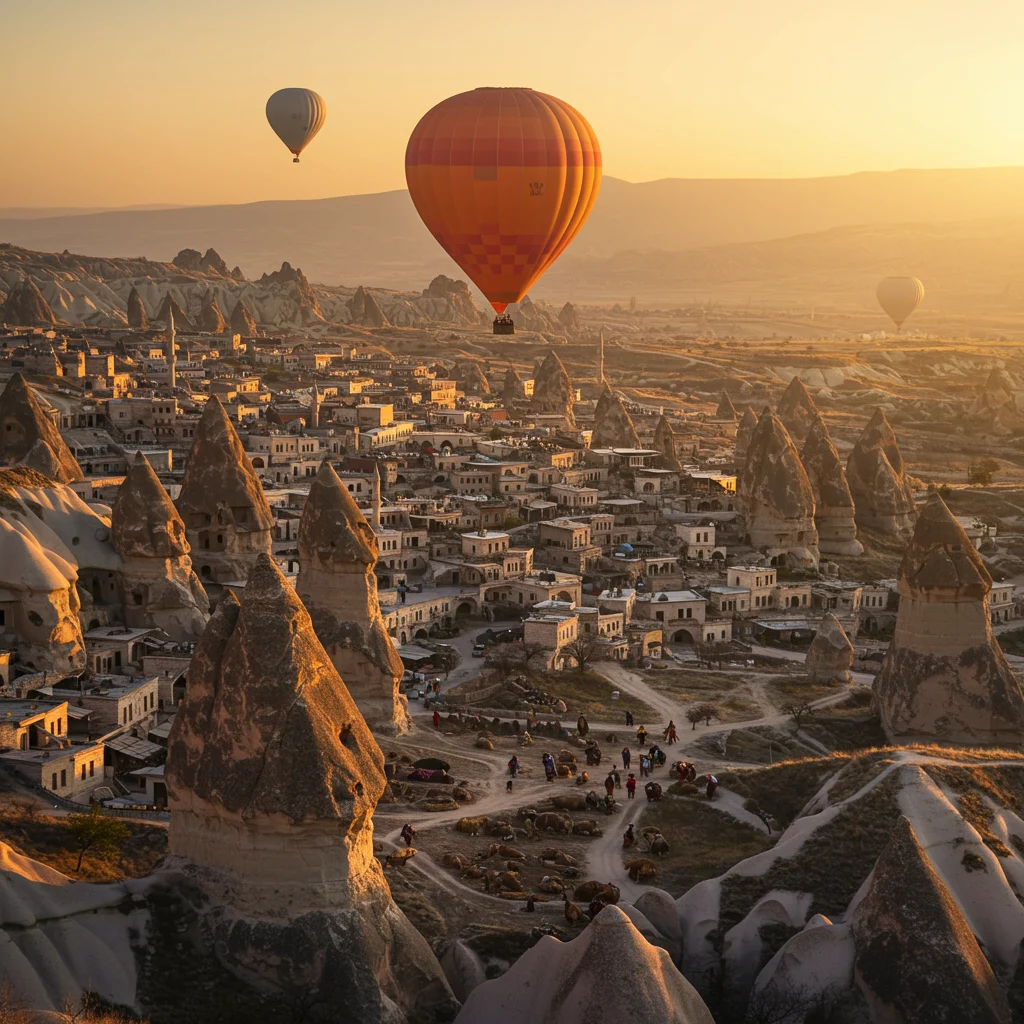
How Does the Red Tour Compare to the Green and Blue Tours?
The Green Tour explores the southern valleys, underground cities, and Ihlara Gorge, while the Blue Tour focuses on lesser-known villages and natural wonders. Each route has its own character, and combining tours can provide a comprehensive Cappadocian experience.
For those interested in unique natural wonders elsewhere in Turkey, our post about the Pamukkale Hierapolis and Cleopatra’s Pool Tour offers insights into another of the country’s remarkable landscapes.
Hot Air Balloon Rides: Should You Combine With the Red Tour?
Hot air ballooning is synonymous with Cappadocia. Many travelers opt to pair a sunrise balloon ride with the Red Tour for an unforgettable day of aerial and ground-level exploration.
Those who love ballooning might also enjoy learning about the Hot Air Balloon Marrakech Experience for a different perspective on another iconic landscape.
Unique Accommodation Options in Cappadocia
From luxury cave hotels to cozy guesthouses, Cappadocia offers accommodations that blend comfort with a sense of history. Many lodgings feature panoramic terraces, traditional breakfasts, and opportunities to interact with local hosts.
Traditional Cappadocian Cuisine: What to Try
Cappadocian cuisine reflects the region’s agricultural roots and multicultural influences. Meals are hearty, aromatic, and crafted from local ingredients.
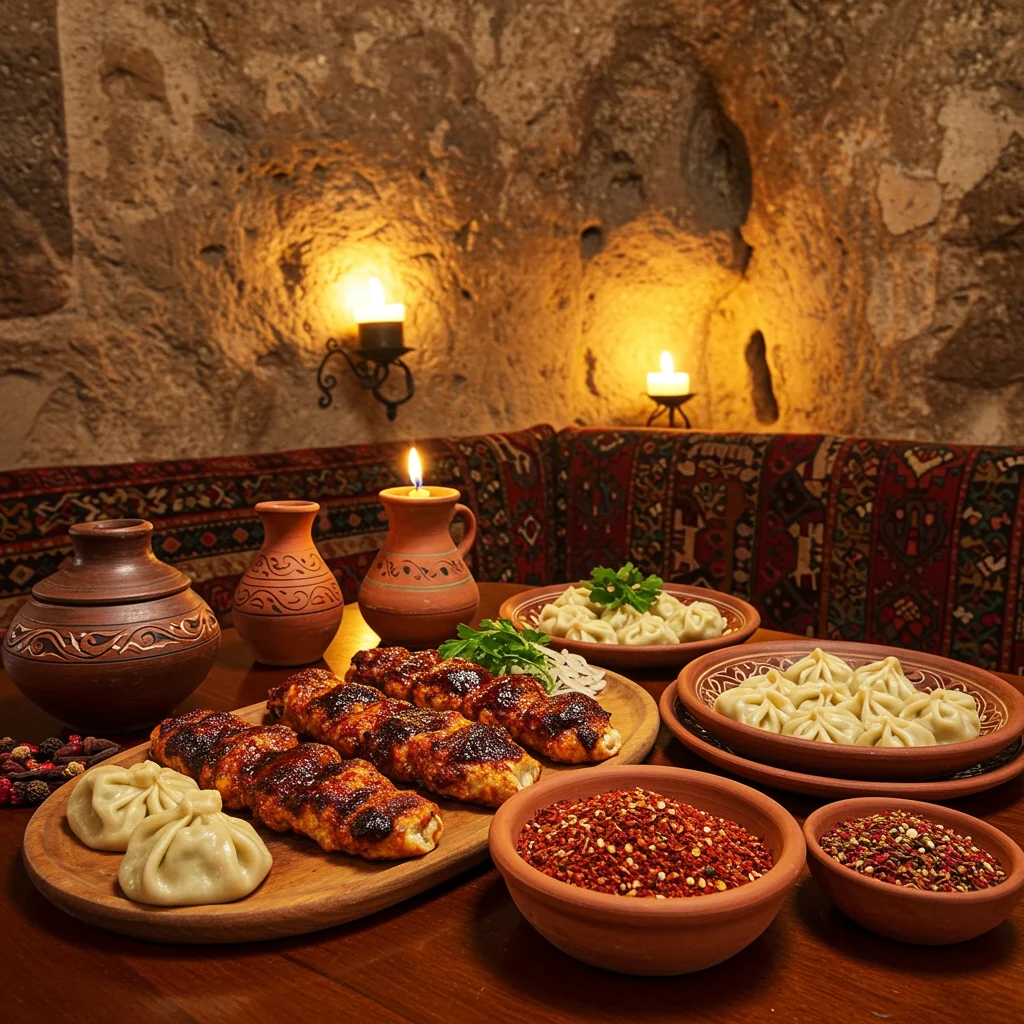
Best Restaurants Along the Red Tour Route
Many Red Tour itineraries include lunch at a family-run restaurant in Avanos or Göreme, where guests can sample regional specialties in a welcoming setting. Look for establishments that use fresh, seasonal produce and traditional cooking methods.
Must-Try Dishes in Cappadocia
Signature dishes include testi kebab (meat and vegetables slow-cooked in a clay pot), mantı (Turkish dumplings), and gözleme (savory flatbread with fillings). Desserts often feature local honey, nuts, and dried fruits.
If you appreciate sunrise meals in extraordinary settings, you may find inspiration in our guide to the Kata Tjuta Sunrise and Valley of the Winds.
Vegetarian and Vegan Options on the Red Tour
Vegetarians and vegans will find a growing array of options, including lentil soup, stuffed vine leaves, roasted vegetables, and fresh salads. Be sure to inform your guide or restaurant staff of any dietary preferences in advance.
Practical Information for Red Tour Travelers
A little preparation can help you make the most of your Red Tour experience. Here is what you need to know before setting out.
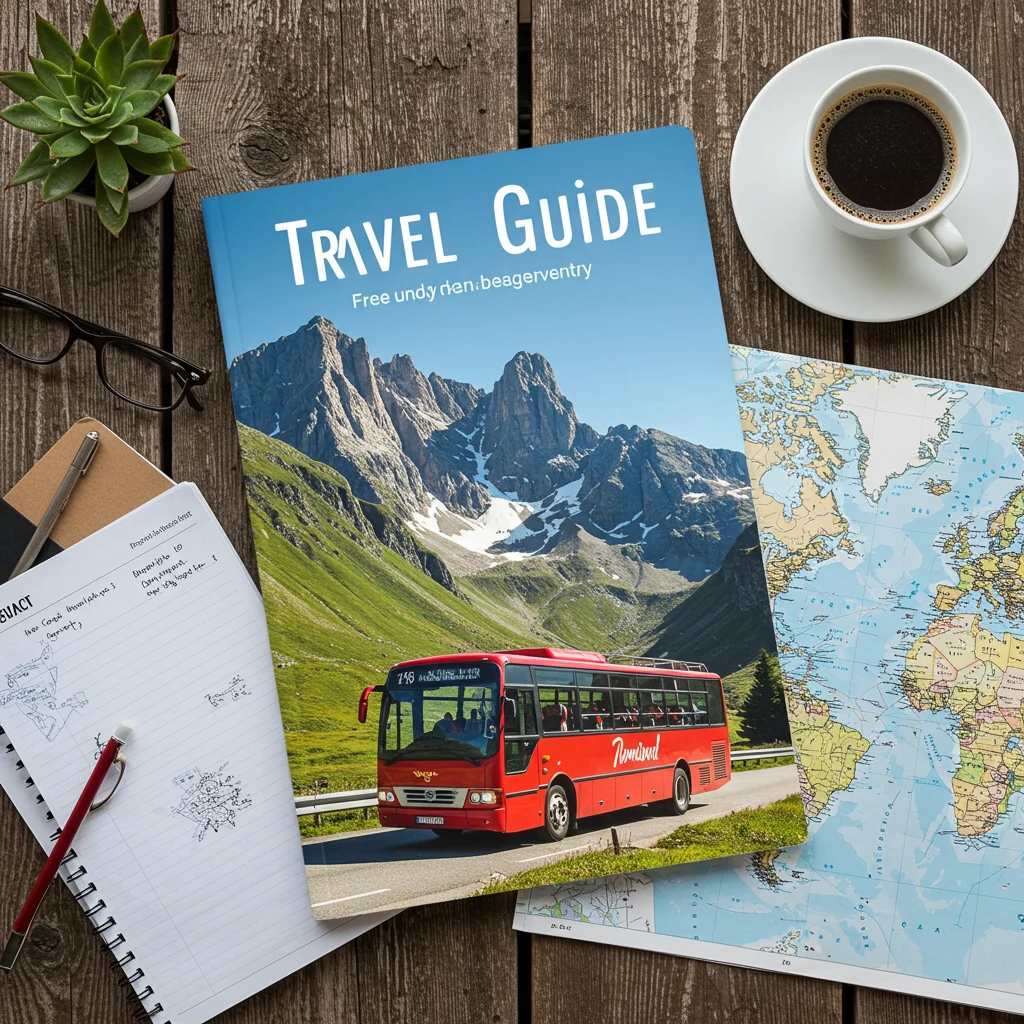
How Much Does the Red Tour Cost?
Prices vary depending on the provider, group size, and included amenities. On average, expect to pay between €40 and €70 per person, with some tours offering premium options for private groups or additional activities.
What’s Included in a Typical Red Tour Package?
Most packages cover transportation, entrance fees, a professional guide, and lunch. Always confirm what is included before booking, as some tours may offer extras such as pottery workshops or wine tastings.
Is the Red Tour Suitable for Families and Kids?
The Red Tour is well-suited for families, with plenty of opportunities for children to explore caves, hike short trails, and participate in hands-on activities. Be mindful of uneven terrain and supervise young children near steep paths.
Accessibility Tips: Can Everyone Enjoy the Red Tour?
While many sites are accessible to visitors of all ages, some locations feature stairs or uneven surfaces. If you have mobility concerns, discuss your needs with the tour provider to arrange appropriate accommodations.
How to Prepare for Weather in Cappadocia
Cappadocia’s weather can change quickly, so pack layers and be prepared for both sun and wind. Rain is rare but possible, especially in spring and autumn. A compact umbrella or rain jacket can be useful.
Safety Considerations on the Red Tour
Guides prioritize safety at every stop, but it is important to stay on marked paths, respect signage, and follow instructions. Bring any necessary medications and keep emergency contact information handy.
Sustainable Tourism: How to Respect Cappadocia’s Wonders
Responsible travel is vital to preserving Cappadocia’s fragile landscapes and cultural heritage for future generations.
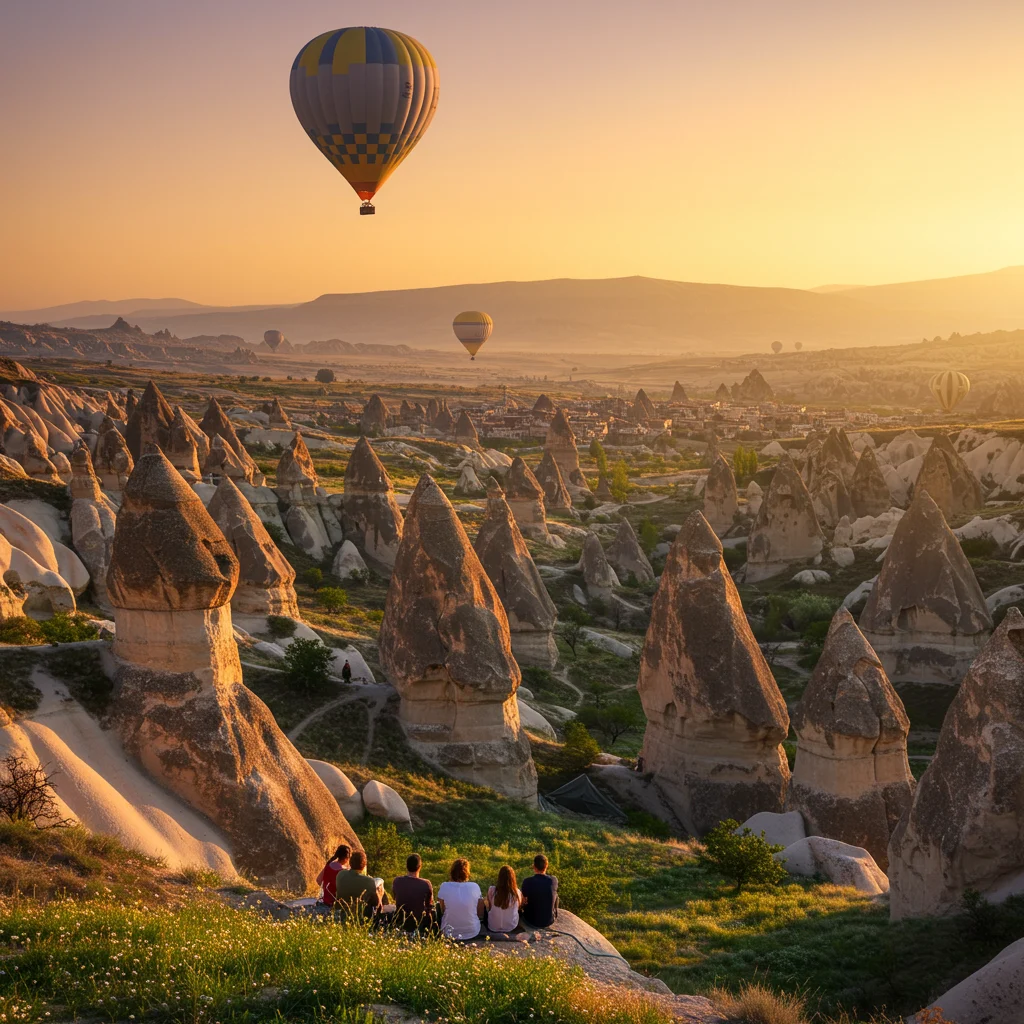
How to Minimize Your Environmental Impact
Stick to established trails, avoid picking plants or disturbing wildlife, and use refillable bottles to reduce plastic waste. Choose tour operators who prioritize sustainability and local partnerships.
Supporting Local Communities Along the Red Tour
Purchasing handmade crafts, dining at locally owned restaurants, and engaging respectfully with residents all contribute to the well-being of Cappadocia’s communities.
Packing Out Waste and Responsible Travel Tips
Carry a small bag for trash, and never leave waste behind in the valleys or villages. Respect the quiet beauty of the landscape, and remember that your actions help protect these sites for others to enjoy.
How to Book on Viator
To secure your spot on the Red Tour, visit Viator, where you can compare providers, read verified reviews, and choose the itinerary that best fits your interests. Viator offers a user-friendly booking process, transparent pricing, and customer support to assist with any questions before your trip.

Booking ahead through Viator gives peace of mind and helps you plan your trip with confidence, especially during peak travel seasons.
Red Tour Cappadocia: Frequently Asked Questions
We have gathered answers to some of the most common questions about the Red Tour to help you prepare for your visit.
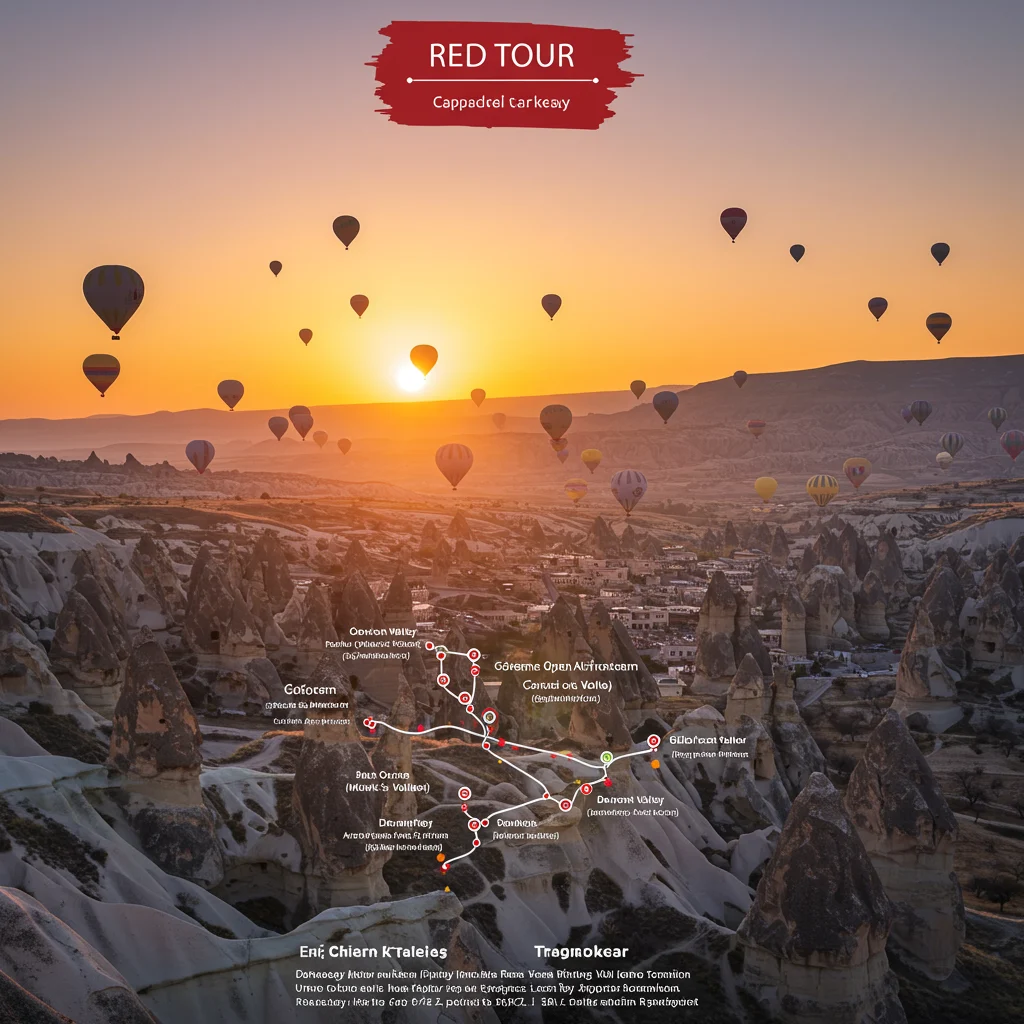
How Long Does the Red Tour Take?
The Red Tour typically lasts 6–8 hours, including transportation, guided visits, and a lunch break. Exact timing may vary depending on group size and seasonal conditions.
Is the Red Tour Suitable in All Seasons?
Yes, the Red Tour operates year-round. Spring and autumn offer the most comfortable weather, while winter tours provide a quieter atmosphere and unique photo opportunities.
Can You Customize Your Red Tour Experience?
Many agencies offer private or semi-private tours with customizable itineraries, allowing you to focus on specific interests or add extra stops. Discuss your preferences with the provider at the time of booking.
Red Tour Cappadocia: Final Thoughts and Recommendations
The Red Tour is an exceptional introduction to the wonders of Cappadocia, blending natural beauty, ancient history, and living traditions into a single, memorable day. Whether you are drawn by the surreal landscapes, the rich cultural heritage, or the warmth of local hospitality, this journey leaves a lasting impression.
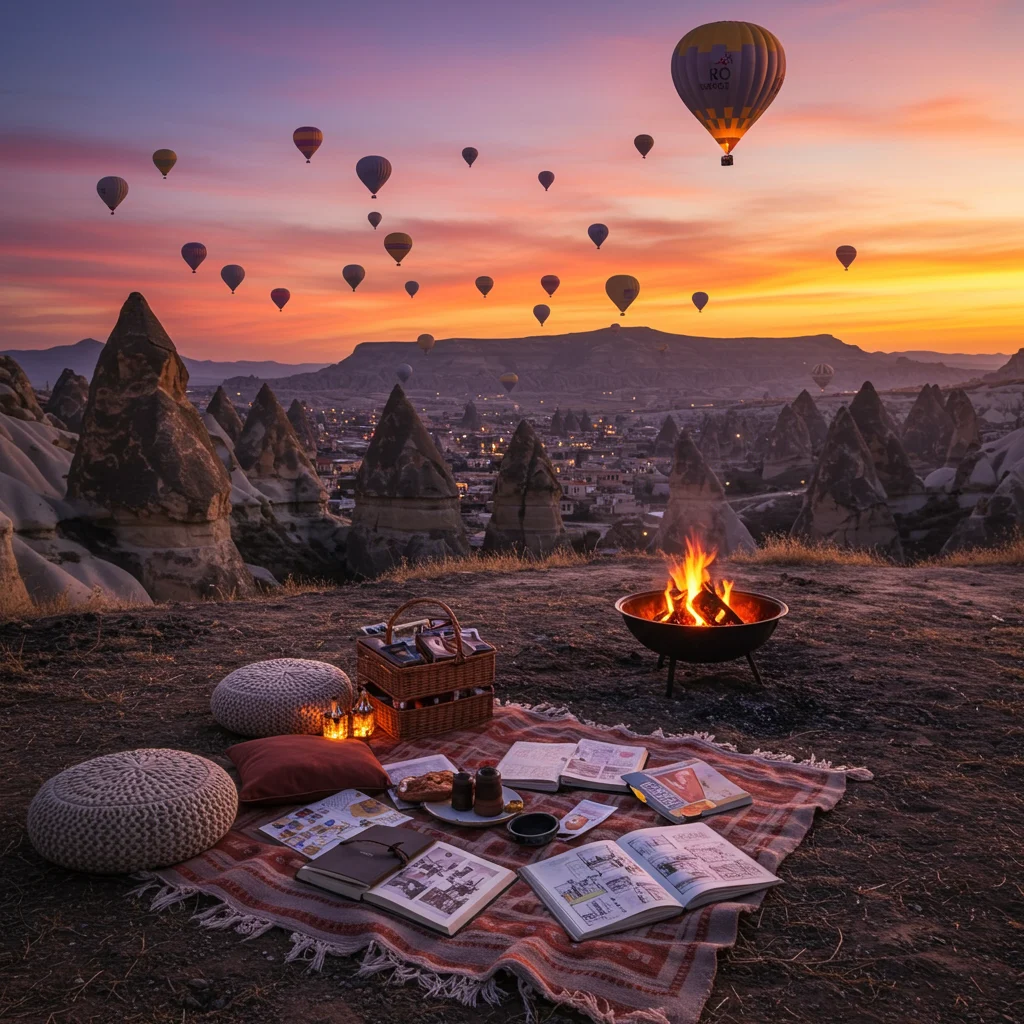
For more expert travel inspiration and practical advice, visit Unisho. We are committed to helping you experience the world’s most remarkable destinations with confidence and curiosity.
“Disclaimer: This information is accurate to the best of our knowledge; however, there may be changes or mistakes. Please verify exact details on the Viator booking page.”

